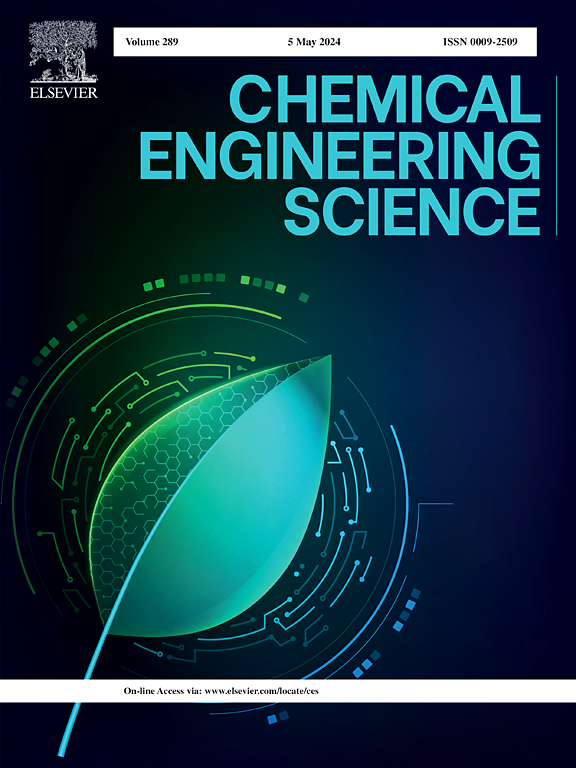Electronic structure modulation of lanthanum-doped Cu2O supported by GO to accelerate C–C coupling for electrocatalytic CO2 reduction towards multicarbon products
IF 4.1
2区 工程技术
Q2 ENGINEERING, CHEMICAL
引用次数: 0
Abstract
Electrocatalytic CO2 reduction to value-added fuels and feedstocks, especially multicarbon (C2+) products, provides a sustainable pathway to address the negative environmental impacts of excessive CO2 emissions. However, the selective conversion from CO2 to C2+ remains challenging due to the lack of efficient electrocatalysts. In this work, La-incorporated Cu2O catalysts loaded on graphene oxide (La-Cu2O/GO) were successfully prepared via a typical liquid-phase reduction method. Notably, in situ ATR-FTIR spectroscopy and theoretical calculations revealed that the incorporation of La can effectively modify the electronic structure of Cu2O, thus accelerating the adsorption of C–C coupling intermediates, ultimately improving the selectivity of C2+ products. Through the electrocatalytic measurement under a constant current density of −100 mA cm−2, La-Cu2O/GO displays remarkable performance for CO2 conversion to C2+ products with a Faraday efficiency (FE) of 43.9 %, up to 3.51 times higher than that of pristine Cu2O/GO.


氧化石墨烯负载镧掺杂Cu2O加速C-C耦合电催化CO2还原成多碳产物的电子结构调制
电催化二氧化碳还原为增值燃料和原料,特别是多碳(C2+)产品,为解决过量二氧化碳排放对环境的负面影响提供了一条可持续的途径。然而,由于缺乏高效的电催化剂,从CO2到C2+的选择性转化仍然具有挑战性。在这项工作中,通过典型的液相还原方法成功制备了负载在氧化石墨烯上的La-Cu2O催化剂(La-Cu2O/GO)。值得注意的是,原位ATR-FTIR光谱和理论计算表明,La的加入可以有效修饰Cu2O的电子结构,从而加速了C-C偶联中间体的吸附,最终提高了C2+产物的选择性。在−100 mA cm−2的恒定电流密度下进行电催化测试,发现La-Cu2O/GO对CO2转化为C2+具有显著的催化性能,其法拉第效率(FE)达到43.9 %,是原始Cu2O/GO的3.51倍。
本文章由计算机程序翻译,如有差异,请以英文原文为准。
求助全文
约1分钟内获得全文
求助全文
来源期刊

Chemical Engineering Science
工程技术-工程:化工
CiteScore
7.50
自引率
8.50%
发文量
1025
审稿时长
50 days
期刊介绍:
Chemical engineering enables the transformation of natural resources and energy into useful products for society. It draws on and applies natural sciences, mathematics and economics, and has developed fundamental engineering science that underpins the discipline.
Chemical Engineering Science (CES) has been publishing papers on the fundamentals of chemical engineering since 1951. CES is the platform where the most significant advances in the discipline have ever since been published. Chemical Engineering Science has accompanied and sustained chemical engineering through its development into the vibrant and broad scientific discipline it is today.
 求助内容:
求助内容: 应助结果提醒方式:
应助结果提醒方式:


